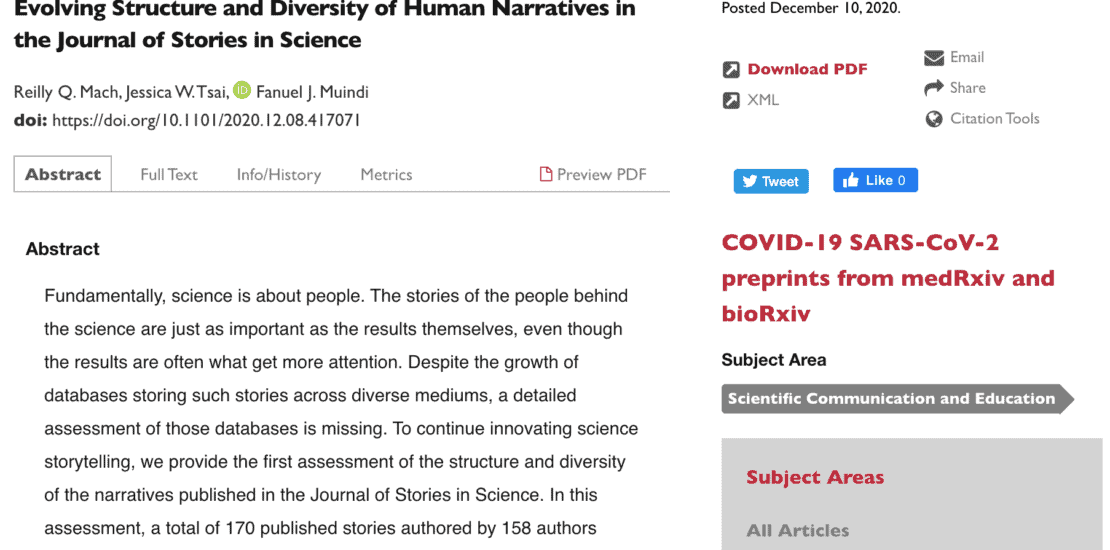- December 20, 2020
- Posted by: Team SAi
- Categories: Article, Research

Authors
, , and
Abstract
Fundamentally, science is about people. The stories of the people behind the science are just as important as the results themselves, even though the results are often what get more attention. Despite the growth of databases storing such stories across diverse mediums, a detailed assessment of those databases is missing. To continue innovating science storytelling, we provide the first assessment of the structure and diversity of the narratives published in the Journal of Stories in Science. In this assessment, a total of 170 published stories authored by 158 authors between 2016 and 2020 are analyzed. Majority (67%) of the authors are women from North America and in the life sciences. The narratives most commonly feature authors from academia (e.g., 23% graduate students, 13% post-doctoral fellows and 21% professors). However, there is also a growing number of authors with PhDs that are working outside of academia (15%). Nearly a quarter (23%) of the database authors come from racial groups (African American, Latino, and Hispanic) that have been shown to be underrepresented in health-related sciences in the United States. Using the industry standard Flesch Reading Ease Score, we found that 74% of the stories included in the analysis fall in the target range of 50-70, which represents readability by students in grades 8-12. The analysis here provides the first deep look into one of the databases publishing diverse stories in science using a wide range of mediums. In summary, there is a need for more emphasis on both expanding and studying such databases given the continuous demand for these stories and their inclusion into K-12 curriculums.
Read the paper: Evolving Structure and Diversity of Human Narratives in the Journal of Stories in Science
